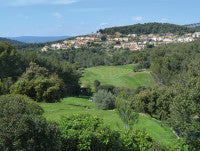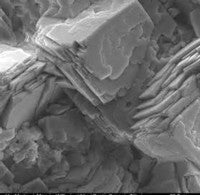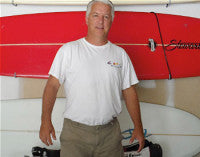Limestone and Gypsum - understanding your options

It all starts with understanding a soil test and knowing how to read that test. A complete soil test will include five major cations: Ca, Mg, K, Na, H plus a CEC value. Having these five major cations accurately tested is the first step to thoroughly understanding the need for, lack of, and performance of the calcium in your soil profile as well as the calcium amendment you may choose to apply.
This is where, we as turf managers, make our first mistake in understanding the calcium we already have. Look at your soil tests. Is there a CEC value? Are there five major cations tested? Many will answer this as - no. And this leads to potential misinterpretation of that soil test. More importantly, you may be making nutrient choices that won't help or work or, more importantly, are being purchased and applied at the wrong rates for the problems that may not even exist. Remember, you are testing nearly 98-100% of that soils ability to hold Ca, Mg, K, Na, H. Leave one out and the others are thrown off and, therefore, your soil test is not worth the paper it is written on.
Why all that calcium? Go back to your text books and research what calcium does in the soil and plant. It has everything to do with: plant stress, colour, rooting, water movement or transpiration, cutting quality, photosynthesis and the list goes on and on. Last time I checked, these things were important. But just seeing calcium on your soil test does not necessarily mean that it is there working or even providing much benefit!

This source of calcium is extremely insoluble. It requires oxidation in order to release. And, because of this oxidation period, your soil supplied calcium will never create the amounts of calcium needed to satisfy three very important factors in the soil and plant - diet, soil interaction and leaching - all of which are constantly occurring. Proper volume of release of calcium satisfies all three of these needs.
Do you need to add more calcium? If you are soil testing and growing fine turf and ornamental lawns, the answer is yes.
Is my Calcium choice working? In the case of limestone and gypsum as amendments, you should be seeing a visible response in some way soon after the calcium application is made. Beyond visual response, you should be seeing better drainage, possibly firmness of the surface and stronger rooting. Or are you still looking at your product laying on the surface because it hasn't broken down yet? And, even worse, are your mowers and golfers/players picking it up on reels, clubs or shoes? That is the easy way to determine if it is working. The difficult way requires further testing, possibly saturated paste tests and/or tissue testing or follow-up soil tests.
Limestone rates are typically determined by a 'buffer index' that should be shown on your soil test. The lower the buffer, the more limestone will be required to improve soil texture and nutrient balance.
Calcium carbonate (limestone) is used as a nutrient releaser in the soil, buffer against chemical misapplication, oxygen and water balance, colour enhancer, improve drainage and, most importantly, fertility enhancer.

Rather, we want to make the correct application, and see it working, so we can move on to something more important. Calcium sulphate (gypsum) is used to treat high pH soil, tight and poorly draining soil, poor fertility performance, issues concerning bicarbonates, sodium, high salt concentrations, high magnesium, poor rooting, turf stresses from traffic and heat, as well as many other issues.
So, is there another option? Using a soluble calcium product solves a number of problems and takes away the negatives of traditional limestone and gypsum application and turns them into positives. These negatives include high rates of application, thorough soil incorporation by mechanical methods, excessive labour and time required to apply, more equipment, more waste, mower pick-up and complaints from golfers.
The products we offer solve all of these issues by employing a technology called thCa™. This is a process which utilises specific acids and polymers that, when combined with calcium, will allow that calcium to become effective with one irrigation cycle or rainfall event. Thereby, we skip the oxidation and hydrolysis period that traditional limestone or gypsum sources require and, because of this, the product requires no mechanical incorporation. This results in less application time, labour and equipment and, importantly, less waste. Furthermore, there is no mower pick-up and golfers or players won't be wearing it on their shoes.
Additionally, the product is less dusty and dissolves quickly, meaning that you don't have to wait for it to break down and become available. It is really a very unique technology that provides the turf manager with a tool to resolve, what may have been, long term soil issues.
In addition, the product is 400% stronger and more efficient than those traditional sources that many of us have been using for decades. thCa™ even goes out into the soil and converts bound-up, locked-up (unavailable) calcium to usable, available calcium.

Paul Burgess - Head Groundsman, Real Madrid
Paul deals with daily tough issues of shade, excessive stress, numerous team/player use of the facility. On top of that he must manage his climate, poor water quality, excessive salts/sodium and the accompanying turf problems associated with these.
He uses Verde-Cal G to assist with his agronomic programmes and manage these problems.
Paul tries to keep things simple at Real Madrid and tackles the issues with common sense approaches which this product fits perfectly.
On one of professional football's biggest stages, Paul does not waste his efforts. Second chances don't come very often.

Jim has been in the golf/lawncare/sales and related turf industries since 1983. He has served in nearly all capacities of the industry from lawncare operative in the early days to golf course superintendent.
He has extensive knowledge of soils, nutrients, and water related issues and has written many articles and newsletters over the years based on these topics.
